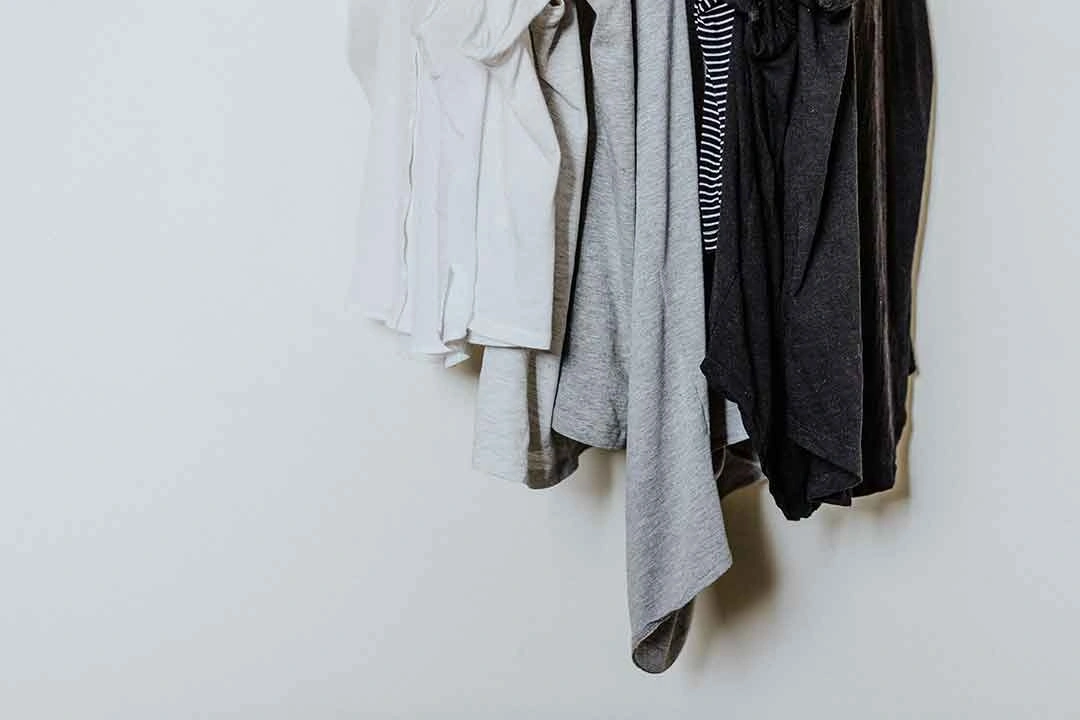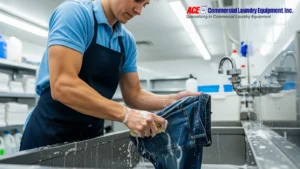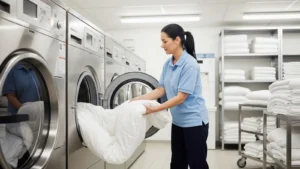In industries where commercial laundry and management are cornerstones of daily operations (eg. healthcare, hospitality, and food services), effective stain removal is not just about aesthetics. It’s about maintaining hygiene, extending textile life, and ensuring a professional standard.
Thus, being able to quickly and efficiently remove stains is critical to reducing operational disruptions and maintaining clean, presentable environments. With the right techniques, washing machines, and products, even the most stubborn stains can be eliminated from clothing, linens, and upholstery.
This comprehensive stain removal guide provides step-by-step instructions tailored for industries that rely on precision in fabric care.
Understanding Stain Types and Effective Cleaning Methods
Stains come in many forms, and treating them effectively starts with identifying their type. Different stains require different laundry supplies and solutions—what works for oil-based stains won’t necessarily work for tannins or protein-based spills.
Understanding the composition of a stain is key to choosing the right cleaning method, preventing fabric damage, and ensuring complete removal. Below, we break down the most common stain types and the best strategies for eliminating them.
1. Protein-Based Stains (Blood, Sweat, Dairy, Egg)
Protein-based stains come from organic materials like bodily fluids, dairy, and eggs. These stains can bond with fabric fibers and become harder to remove if incorrectly treated. The key is to act fast and use cold water to prevent the proteins from setting.
- Blot Immediately: Gently blot with a clean cloth soaked in cold water. Never rub, as this can spread the stain.
- Pre-Treat: Apply an enzyme-based detergent or a mixture of hydrogen peroxide and dish soap directly onto the stain. Let it sit for at least 10 minutes to break down the proteins.
- Wash: Use cold water in the washing machine with your regular detergent. Hot water can cause the stain to bond permanently with the fabric.
Protein stains require swift action and cold treatment. Using enzymatic cleaners and avoiding heat ensures complete removal.
2. Tannin-Based Stains (Coffee, Tea, Wine, Fruit Juices)
Tannin-based stains originate from plant-based liquids such as coffee, tea, and wine. These stains can seep into fabric quickly and must be treated promptly to prevent permanent discoloration.
- Blot Excess Liquid: Use a dry, clean cloth to soak up as much liquid as possible. Do not press too hard, as this may spread the stain.
- Pre-Treat with Acidic Solution: Apply white vinegar or lemon juice directly onto the stain. These acids help break down the tannins.
- Wash in Cold Water: After applying a mild detergent, rinse with cold water. Check the stain before drying, as heat can set it permanently.
The acidic nature of vinegar and lemon juice helps dissolve tannins, ensuring an effective stain-removal process.
3. Oil and Grease Stains (Butter, Cooking Oil, Makeup, Motor Oil)
Oil and grease stains are hydrophobic, meaning they repel water. This makes them harder to remove with traditional washing methods. The goal is to absorb the oil before washing.
- Absorb Excess Oil: Sprinkle baking soda or cornstarch over the stain and let it sit for 15 minutes to soak up the grease.
- Apply a Degreaser: Dish soap, which is designed to cut through grease, should be applied directly to the stain. Let it sit for 10 minutes before washing.
- Wash in Hot Water: If the fabric allows, use the hottest water safe for the material. Hot water helps break down residual oils and remove the stain effectively.
Oil and grease stains require absorbents and degreasers for proper treatment. Acting quickly prevents the oil from setting.
4. Dye and Ink Stains (Pen Ink, Hair Dye, Food Coloring, Paint)
Dye and ink stains penetrate fabric fibers deeply, making them some of the toughest stains to remove. The key is to dissolve the dye molecules before washing.
- Apply Alcohol-Based Solution: Rubbing alcohol or hand sanitizer can help lift the ink or dye from fabric. Dab it on with a cotton ball, but avoid rubbing.
- Soak in Oxygen Bleach: If the stain persists, soak the fabric in an oxygen bleach solution for at least an hour.
- Launder in Hot Water: Use the hottest water safe for the fabric to ensure complete removal.
Dye and ink stains require a combination of solvents and deep penetration treatments to lift pigments successfully.
5. Combination Stains (Sauces, Chocolate, Lipstick, Mud)
Combination stains contain multiple components, such as oil, protein, and dye. This means they require a multi-step approach for effective removal.
- Break Down Oils First: Apply dish soap or a commercial degreaser to tackle any oily components.
- Lift Pigments with Bleach: Use an oxygen bleach solution to remove any residual coloring from sauces or chocolate.
- Wash as Directed: Follow garment care instructions carefully to avoid fabric damage.
Because combination stains involve multiple substances, using targeted treatments for each element ensures successful removal.
Conclusion: Stain Removal in Professional Laundry Management
Effective stain removal is essential in industries where laundry management is integral to operations, such as hospitality, healthcare, and food services. With high fabric turnover and frequent exposure to stubborn stains, businesses must adopt precise stain treatment techniques to maintain cleanliness and professionalism.
Using the right approach for each type of stain ensures fabrics remain in optimal condition, reducing the need for costly replacements. Enzyme-based detergents, degreasers, and oxygen bleach solutions play a vital role in tackling specific stains, while quick action and proper laundering prevent permanent damage.
For businesses that handle large-scale laundry operations, investing in fabric protectors, advanced cleaning agents, and professional-grade washing equipment is crucial. Implementing these best practices not only enhances fabric longevity but also ensures a high standard of hygiene and presentation across industries that rely on impeccable garment and linen maintenance.
Should you need assistance with finding the right materials and equipment for your stain-removal needs, make sure to give ACE Commercial Laundry Equipment a call; we’ll be happy to help you.




